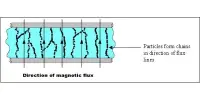An acoustic metamaterial is a material that is designed to control and manipulate the propagation of sound waves. It is a man-made material with unique acoustic properties not found in naturally occurring materials. These properties are achieved through the careful arrangement of the material’s internal structure and/or the use of specially designed materials with unique properties.
A material designed to control, direct, and manipulate sound waves or phonons in gases, liquids, and solids (crystal lattices) is known as an acoustic metamaterial, sonic crystal, or phononic crystal. Sound wave control is achieved by varying parameters such as bulk modulus β, density ρ, and chirality. They can be designed to transmit or trap and amplify sound waves at specific frequencies. The material in the latter case is an acoustic resonator.
Acoustic metamaterials are used to model and study extremely large-scale acoustic phenomena such as seismic waves and earthquakes, as well as extremely small-scale phenomena such as atoms. The latter is made possible by band gap engineering: acoustic metamaterials can be designed to have band gaps for phonons, similar to how band gaps for electrons in solids or electron orbitals in atoms exist. As a result, the phononic crystal is becoming a more widely researched component in quantum technologies and experiments that investigate quantum mechanics. Negative refractive index material research and (quantum) optomechanics are two important branches of physics and technology that rely heavily on acoustic metamaterials.
Properties
One of the most important properties of acoustic metamaterials is their ability to control the propagation of sound waves through negative refraction. This means that the material can bend sound waves in the opposite direction of a normal material, resulting in the formation of a negative refractive index. This property has significant implications for the design of devices such as acoustic lenses and cloaking devices.
Acoustic metamaterials can also be designed to exhibit other unique acoustic properties such as acoustic bandgaps, which prevent certain frequencies of sound waves from passing through the material. This property is useful in the design of soundproofing materials and noise-cancelling devices.
Application
There are many potential applications for acoustic metamaterials, including in the fields of telecommunications, medical imaging, and acoustic sensors. However, the development of these materials is still in its early stages, and much research is needed to fully understand their properties and potential applications.
















